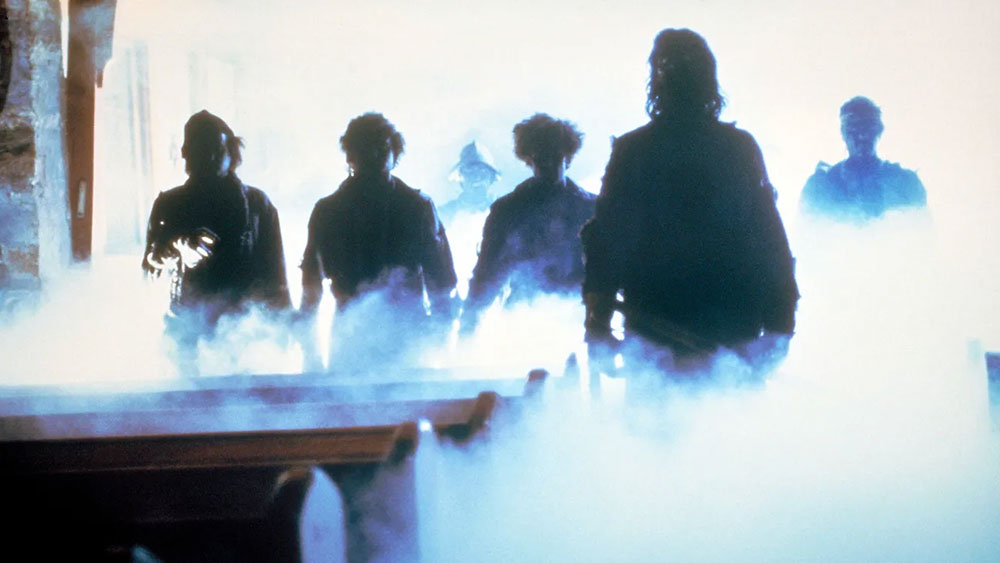The Fog (1980) not only reunited John Carpenter with the horror genre after the previous year’s biopic Elvis, but was his first theatrical feature since Halloween (1978) because both Elvis and the film before that, Someone’s Watching Me! (1978), were produced for television. With a budget more than three times that of Halloween, it also saw Carpenter exercise more creative freedom, matching lo-fi coastal horror with a technical finesse that anticipated the go-for-broke special effects extravaganzas that took over the horror genre the following decade, as seen in Carpenter’s own remake of The Thing in 1982.
The Fog opens with a scene of an elderly man (John Houseman) telling a seafaring ghost story to a group of children. Carpenter cuts between Houseman and his mortified audience, then fades to black and starts the film in earnest. The Fog’s central character is Stevie (Adrienne Barbeau), a regional disc jockey who broadcasts out of an operational lighthouse and passes the time between classic songs sending out warnings to local fishermen and rolling through quick anecdotes to kill dead air. Carpenter imbues the setting of Antonio Bay, a coastal working-class town in California that seems insulated by design, with a quaint mysticism. As with Stevie’s radio show, if something isn’t happening locally, it isn’t worth knowing about.
When the fog begins to roll through town, leaving death and confusion in its wake, the origin of its evil is traced back to the late 19th century. Carpenter, rather wisely, spends less time with the history lesson and more with its consequences, piling up an impressive body count as the ghosts of a doomed vessel enact their revenge on the town that wronged them. As the film’s central mystery unfolds, Stevie becomes an ominous voice-of-god for the town, actively unraveling the origins of the fog on live air. As much a tale of the supernatural as it is a tried-and-true saga of retribution, The Fog is quintessential Carpenter because its characters are forced to reconcile the evil inherent in their day-to-day surroundings. Like Michael Meyers in Halloween, the ghosts of The Fog are a reminder of the violence that occurs in seemingly tranquil American locales. Like the ghost story that opens it, it’s ultimately a tale of caution.
The Fog screens tonight, January 3, and January 4, at Nitehawk Williamsburg as part of the series “Midnite Movies.”



